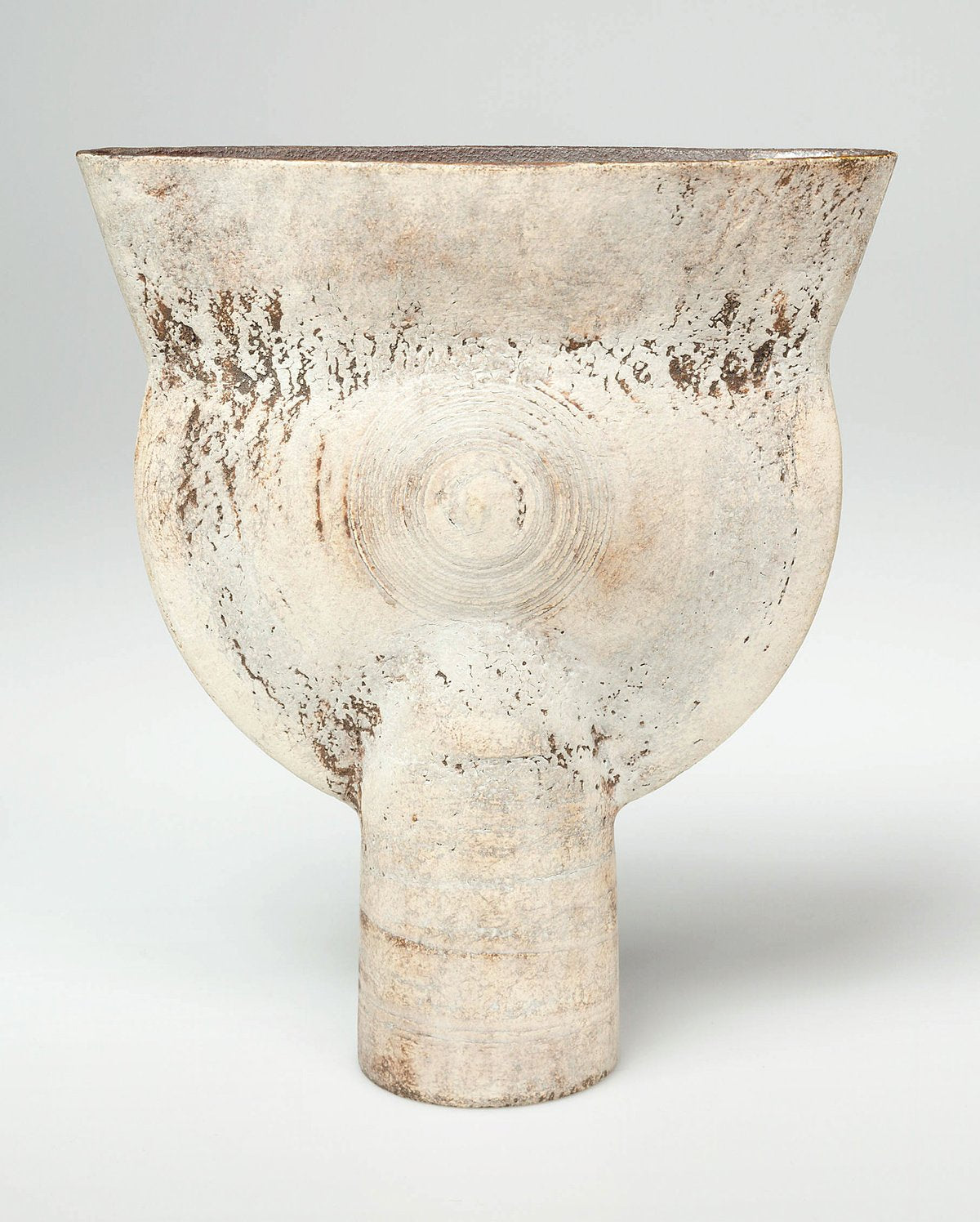
Hans Coper, stoneware ‘thistle’ form vase, ca. 1960, image courtesy of the Crafts Study Centre, University for the Creative Arts, Farnham, U.K.
Unlike other star ceramists, Hans Coper (1920 –1981) wrote next to nothing about pottery. The exception is a now famous statement published on the occasion of his 1969 exhibition at London’s Victoria & Albert Museum. He began: “A pre-dynastic Egyptian pot, roughly egg-shaped, the size of my hand: made thousands of years ago, possibly by a slave, it has survived in more than one sense.” Although his sentence reads like a fragment, rough and cracked, it’s as stalwart as the Egyptian vessel.
Coper held that relic, literally and figuratively: “This is the only pot which has really fascinated me.” His praise admitted a long preoccupation with ancient wares. During the lean postwar years, Coper kept warm in the British Museum, where he haunted the vast collection of antiquities. Many of Coper’s vases, like bulbils growing on thick stems, stand on cylindrical feet remini
scent of Attic psykters, ancient Greek vessels used for cooling wine. Other sui generis forms by Coper set new standards for the complexity of their profiles: an early stoneware vase from 1953 flares, tapers, swells, constricts — all at once; but its dry manganese glaze and sgrafitto spirals, like Hohokam petroglyphs scratched in stone, pull us back to earlier sources.
Albion Mews, just north of Hyde Park, is an axis mundi of twentieth-century ceramics: Lucie Rie (1902 – 1995) lived and worked there. She also shared her studio with Coper, who had arrived in 1946 desperate for work. Untrained, he molded buttons from clay. His drive and talent impressed Rie, who came to regard the younger artist not as a student but as a partner. By the time Coper left her pottery to establish his own studio at the Digswell Arts Trust in early 1959, he had won a Gold Medal at the Milan Triennale and achieved his signature style: abstract component pots thrown on a Continental kick wheel, their surfaces heavily worked. Coper built up his clay bodies with matte slips and manganese then rubbed and abraded them with a pot scrubber. When fired in an electric kiln, they appeared flaked and worn as if passed hand-to-hand across generations, their place in time obscured by form and finish.
Early in his career, Coper longed to be a sculptor — and he was. His pots are always pots (Rie kept flowers in them) but never just. His ‘Cycladic’ forms bear obvious relation to those Bronze Age idols of the same name, both the abstract Keros-Syros heads with protruding noses and the standing female figurines of that period. Coper’s versions of the latter are like birds in flight — it’s no coincidence he once knocked at Brancusi’s door on a Paris visit in early 1957. Whereas the latter’s constructions preside like totems over now-lost civilizations, Coper’s pots might have been the ritual objects of those lost times: the products of hot fires in dim caves.
